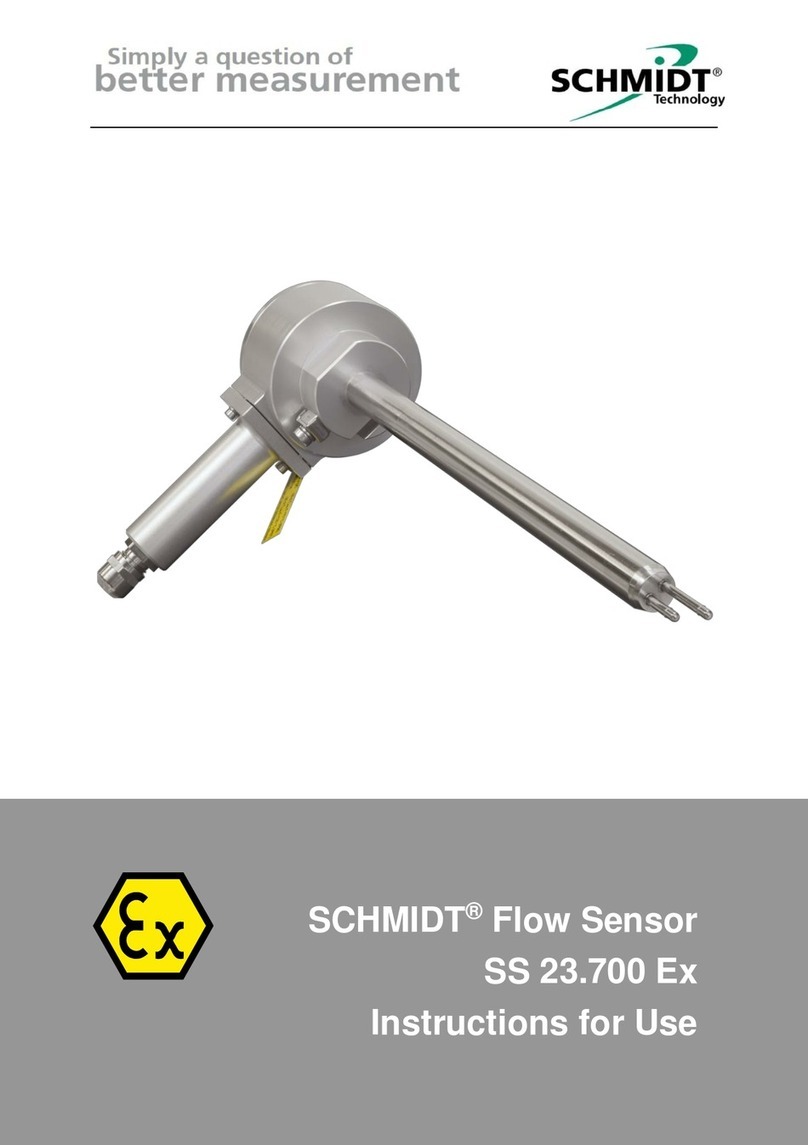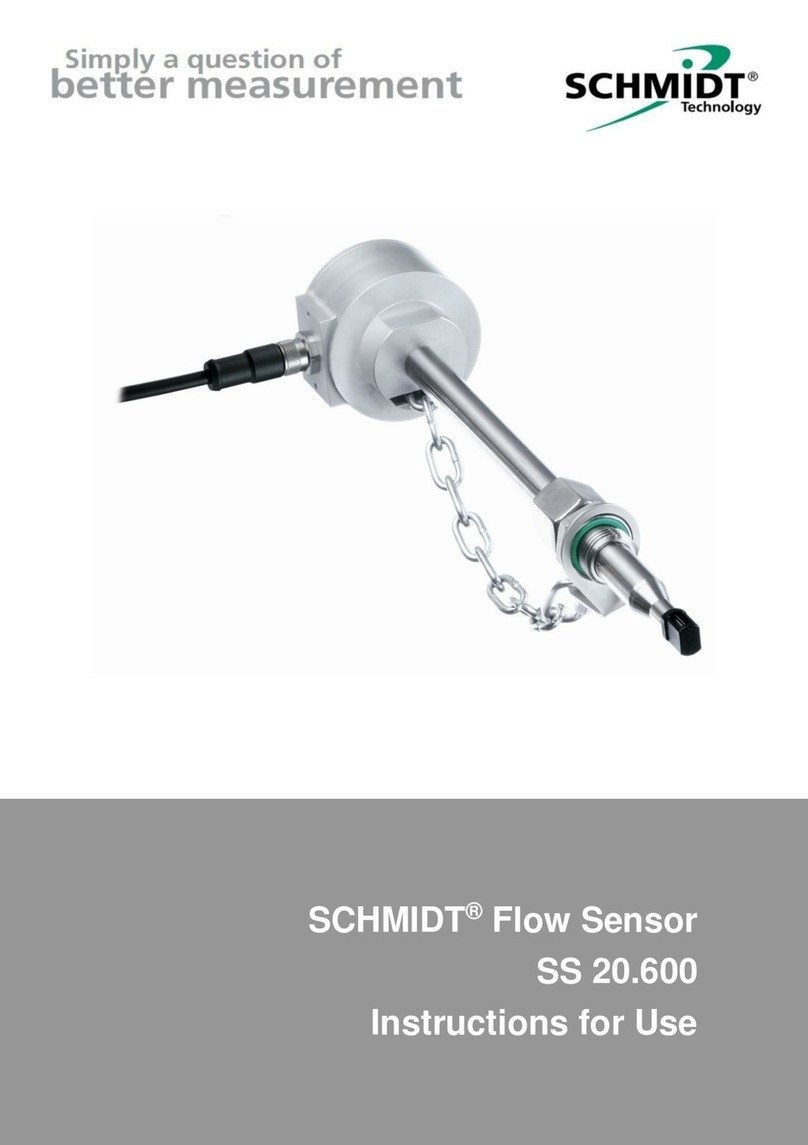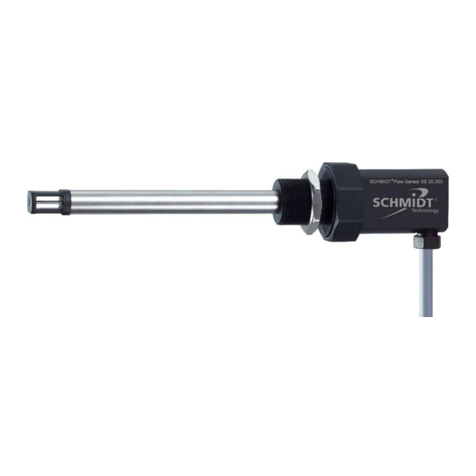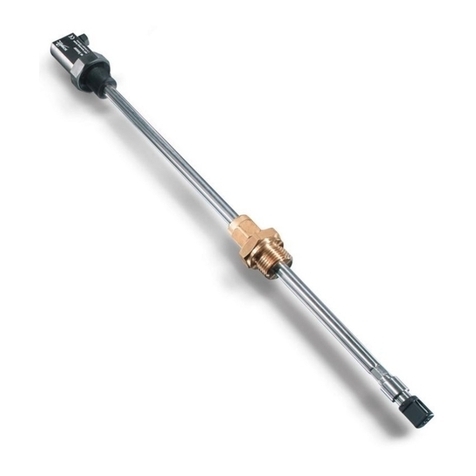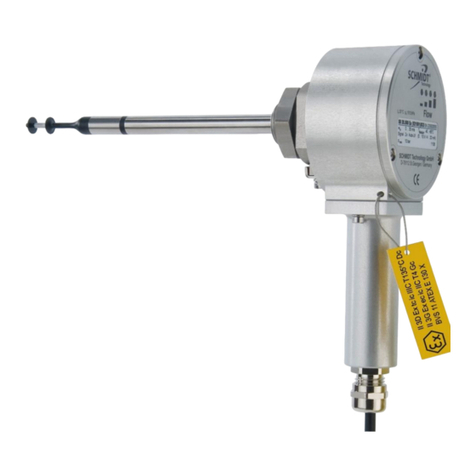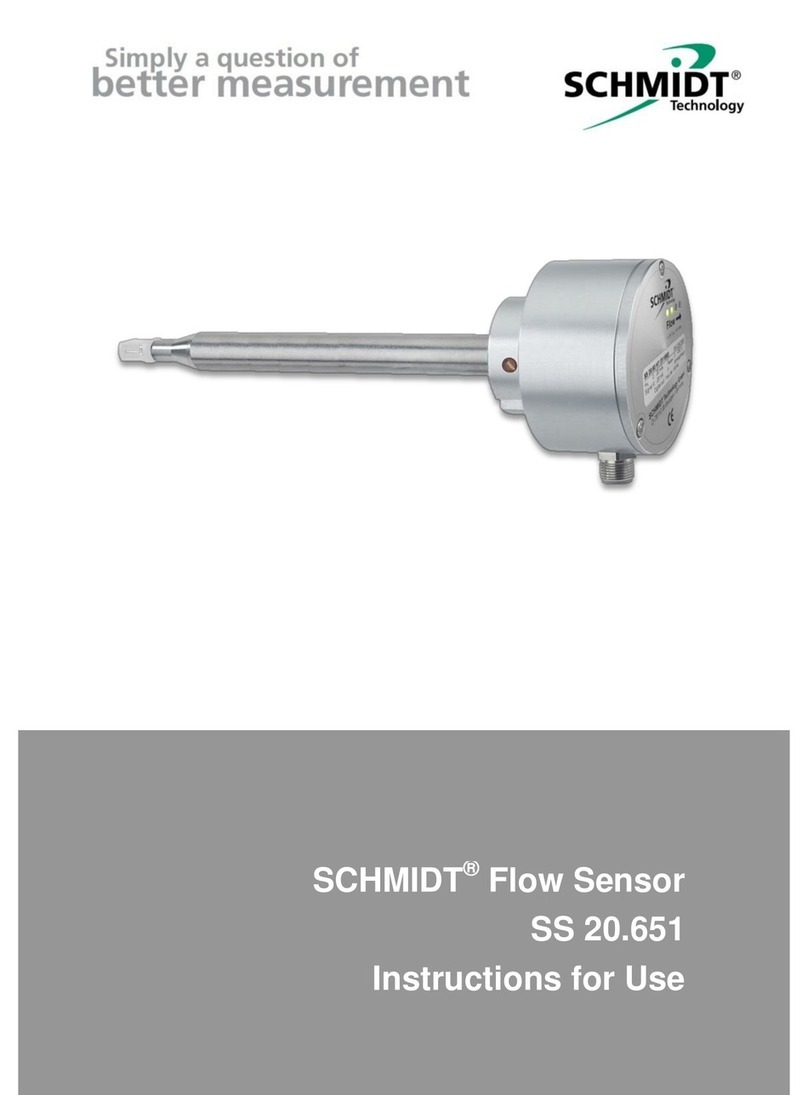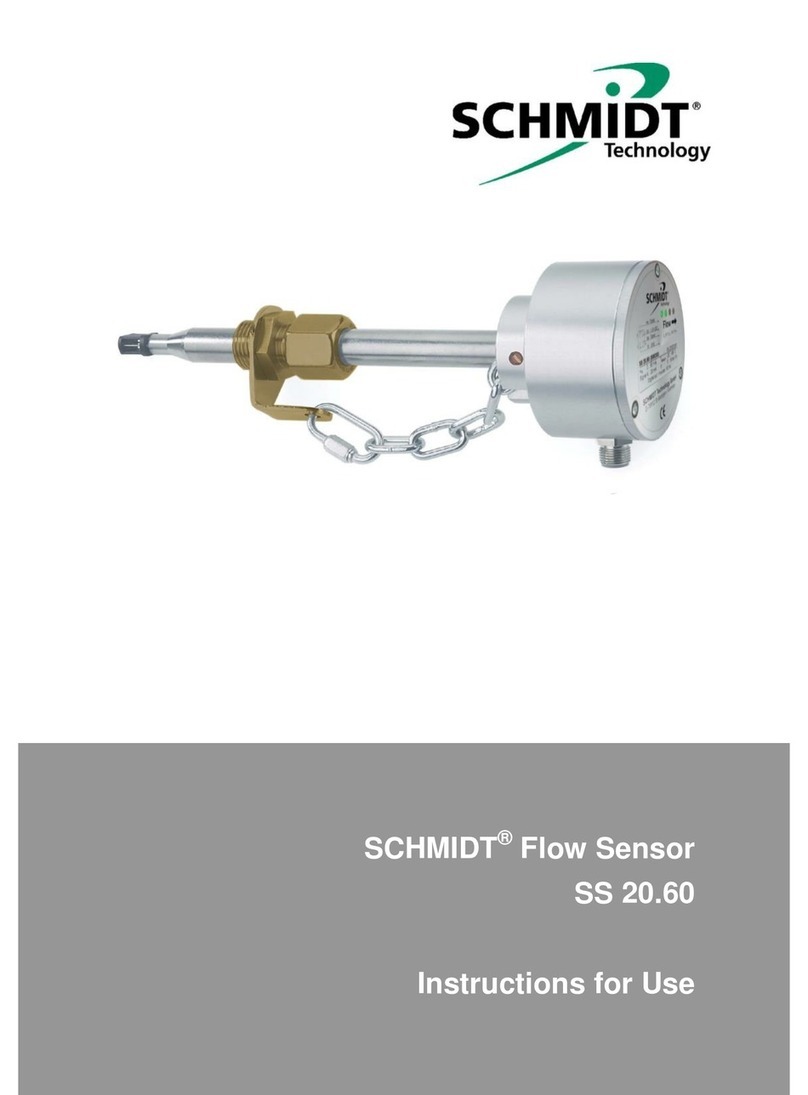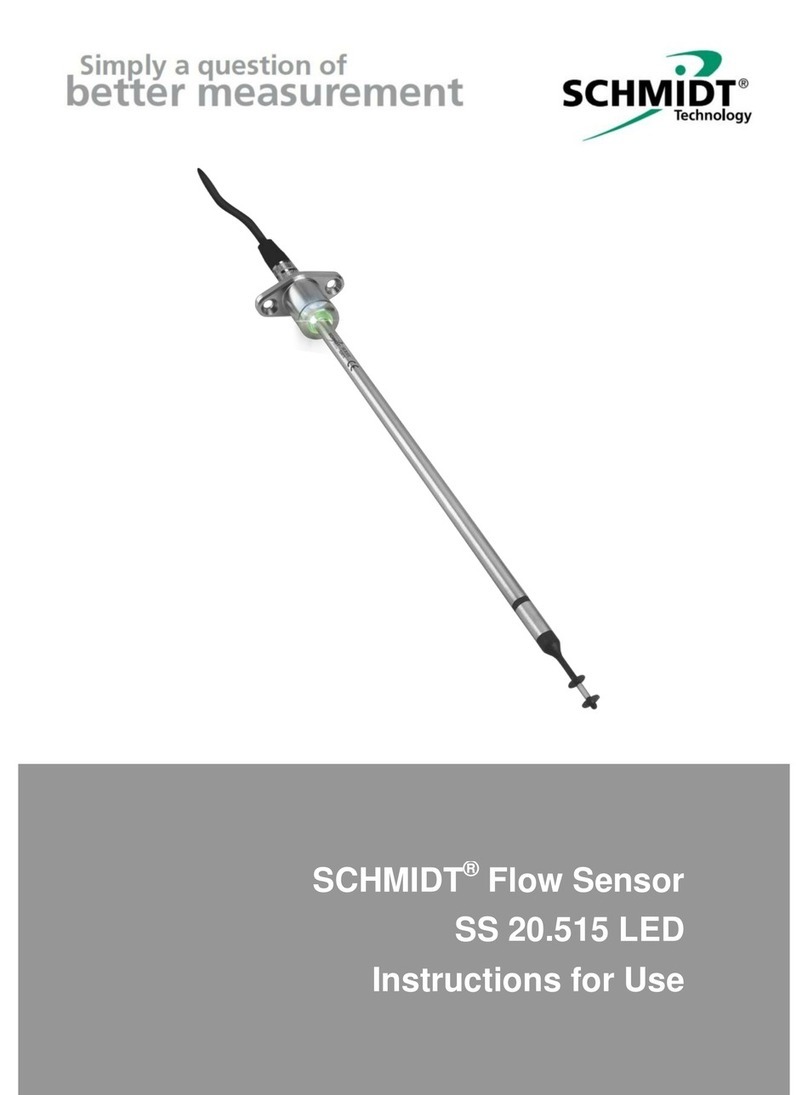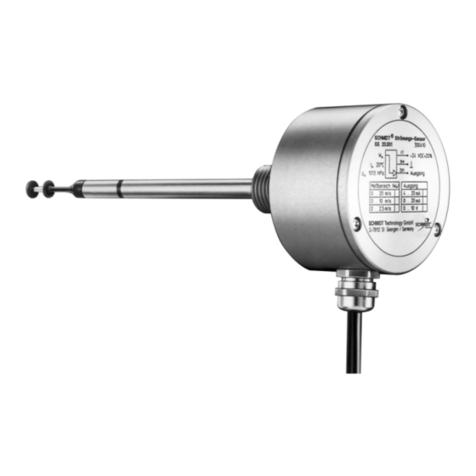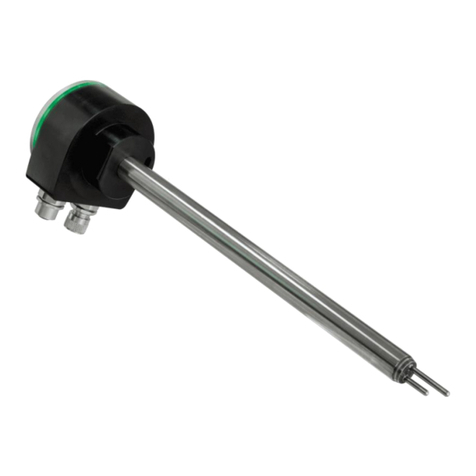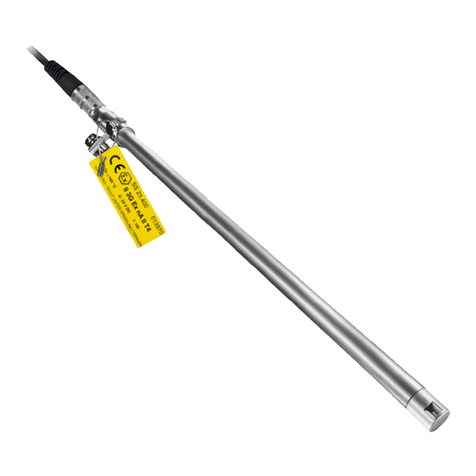Instructions for Use –SCHMIDT®Flow Sensor SS 20.500 Page 3
1 Important information
The instructions for use contain all required information for a fast commis-
sioning and a safe operation of SCHMIDT®flow sensors.
These instructions for use must be read completely and observed
carefully, before putting the unit into operation.
Working on a pressurized system as well as assembly, electrical in-
stallation, commissioning and operation of the sensor may only be
carried out by trained specialists. Safety and accident prevention reg-
ulations must be observed.
Any claims under the manufacturer's liability for damage resulting
from non-observance or non-compliance with these instructions will
become void.
Tampering with the device in any way whatsoever - with the exception
of the designated use and the operations described in these instruc-
tions for use - will forfeit any warranty and exclude any liability.
The unit is designed exclusively for the use described below (refer to
chapter 2). In particular, it is not designed for direct or indirect protec-
tion of personal and machinery.
SCHMIDT Technology cannot give any warranty as to its suitability
for certain purpose and cannot be held liable for accidental or sequen-
tial damage in connection with the delivery, performance or use of this
unit.
Symbols used in this manual
All the symbols used in this manual are explained in the following section.
